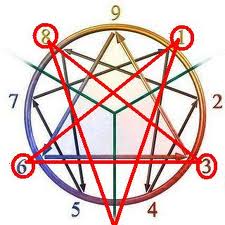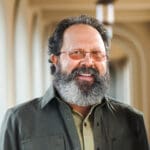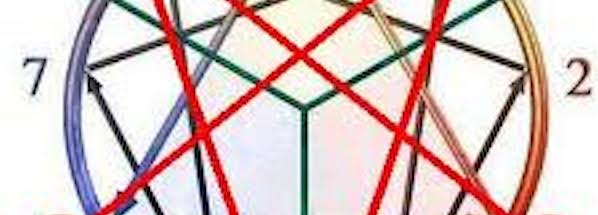Dear Dan, I have run into the Enneagram in my spiritual direction training. There is something about the approach that doesn’t ring true to me but I can’t quite put my finger on it.
 Well, the reason something doesn’t ring true about it is that the Holy Spirit is working in you to guide you to truth. My friend Susan Brinkman (over at Women of Grace) has written a post on this that will help you understand why these ideas don’t ring true to you.
Well, the reason something doesn’t ring true about it is that the Holy Spirit is working in you to guide you to truth. My friend Susan Brinkman (over at Women of Grace) has written a post on this that will help you understand why these ideas don’t ring true to you.
“I’m enrolled in a “Catholic Adult Faith Formation” sponsored by our diocese. When I enrolled it was presented to be on the true Catholic faith “as there’s so much out there that isn’t true Catholic teaching”. A few months into this “formation” we were introduced to the enneagram to discover our personality type because it was quoted “St. Ignatius makes it clear that to understand our personality type is the key to our spiritual growth and path” and in St. Teresa of Avila’s Mansions [The Interior Castle], the first room is “know thyself”. I’ve brought up the Pontifical document cautioning that the enneagram is not to be used for “spiritual growth” with the response it is being used as “human growth” and not “spiritual growth.”
Sounds like your Adult Faith Formation team is resorting to splitting hairs in order to escape the obvious – the Enneagram is a tool founded in the occult that has no place in a Catholic education program. What is their definition of “human growth” and how does it differ from “spiritual growth?” And if it’s just being used for “human growth” purposes, why are they quoting from spiritual masters regarding self-knowledge (which is very much a part of spiritual direction!!!) in support of their use of it? (Do they really believe St. Ignatius and Teresa of Avila would approve of such a tool?)
For those readers who don’t know, the enneagram is a popular New Age personality typing system. It comes from the Greek word “ennea” which means nine and “gramma” which means line drawing. The enneagram symbol is a circle surrounding a nine pointed star upon which nine human personality types are symbolically represented at equally distant points on the circumference. These numbers are then connected by arrows in significant patterns which supposedly point the way to health (integration) or neurosis (disintegration).
It became popular in U.S. seminaries several decades ago and is now in widespread use in parishes, mostly for spiritual direction or similar purposes. It received a strong warning from the Pontifical Councils for Culture and Inter-religious Dialogue in their document, Jesus Christ, the Bearer of the Water of Life: “. . . (T)he enneagram, the nine-type tool for character analysis, which when used as a means of spiritual growth introduces an ambiguity in the doctrine and the life of the Christian faith.” (Sec. 1.4)
The first reason to avoid use of the Enneagram is because of where it came from – the occult.
The enneagram came from the Sufi religion and was introduced to the west by an Armenian occultist named George Ivanovitch Gurdjieff, who lived in Russia from 1877 to 1947. He attended the seminary as a boy but left at the age of 13 to pursue the occult, in which he was deeply involved for the rest of his life. During his travels through Egypt, India and Tibet, he came across a group of Sufis (Muslim mystics) who lived in Central Asia, from whom he learned the enneagram. They had been using it for fortune telling through numerology and as a symbol of the nine stages of enlightenment rather than the nine personality types ascribed to it in the west. Gurdjieff believed the enneagram was a universal symbol containing secret powers, and it was he who brought the symbol to the west.
Oscar Ichazo, a Chilean occultist, later adapted the enneagram to its present use after learning it from one of Gurdjieff’s disciples. Ichazo is responsible for developing the system of nine personality types that it now contains.
Ichazo’s history is even more disturbing than Gurdjieff’s. “At the age of six he began having out-of-body experiences, which led to his disillusionment with the church,” writes New Age expert and former enneagram enthusiast, Father Mitch Pacwa. “He could not accept Catholic teaching on heaven or hell because he had been there and knew more about it than Christ and the Church.”
Ichazo was involved in Oriental martial arts, Zen, Andes Indian thought, shamanism, yoga, hypnotism and psychology. He claims to have received instructions from a higher entity called “Metatron, the prince of the archangels.” He and his followers claim to contact lower spirits through meditation and mantras, and to be guided by an internal master, known as the Green Qu’Tub, who makes himself known when they reach a sufficiently high stage of development.
Another principal player in the advent of the enneagram in the west was Chilean, Claudio Naranjo, who brought it to the popular New Age community known as the Esalen Institute in Big Sur, California.
From Esalen, Naranjo established a nationwide network of small Enneagram groups. Among his early students was Father Robert Ochs, S.J. by whom Father Pacwa was taught at Chicago’s Loyola University. From there, it quickly spread to seminaries and the general public.
JUNK SCIENCE
In spite of the fact that the enneagram has been subjected to little or no serious scientific scrutiny, it is being used to help people deal with personality disorders.
“Unlike some ‘personality type indices’ the enneagram remains untested by any scientific study,” writes Christopher Rees for Homiletics and Pastoral Review. “Like Sufism, the ‘dynamisms’ adopted in each of the nine ‘types’ depends on which guru or shaikh you prefer. There are as many ways of constructing groups and interpreting the enneagram as there are gurus. So the only apparent similarity the enneagram shares with behavioral sciences is its lack of a paradigm.”
Because the Enneagram has descriptions that read like those for esoteric systems like tarot, astrology, biorhythms, etc., advocacy of the enneagram is even more problematic for Catholics, Rees writes.
“. . . The Gnostic [salvation through knowledge] roots manifest in all enneagram systems guarantee that enneagram systems can never be reconciled with the Sacred Deposit of Faith.”
The mixture of so many non-Christian and occult elements in the enneagram, combined with its lack of scientific validity, should warn people away from its use.
“No tests, no standards, no board of examination exists, so most enneagram ‘experts’ have that title through self-declaration and workshop advertising,” writes Father Pacwa.
“People do not go to doctors and psychologists unless that practitioner is tested and licensed. Should not some similar requirement be made of enneagram teachers, who not only explain what your personality is like, but make recommendations about what you should be like?”
He concludes: “Until such verification of the enneagram occurs, resulting in ways to discern who has enneagram expertise, I recommend that people not patronize the workshops, seminars and retreats.”
Additional information on the Enneagram is available in a booklet in our Learn to Discern series.





